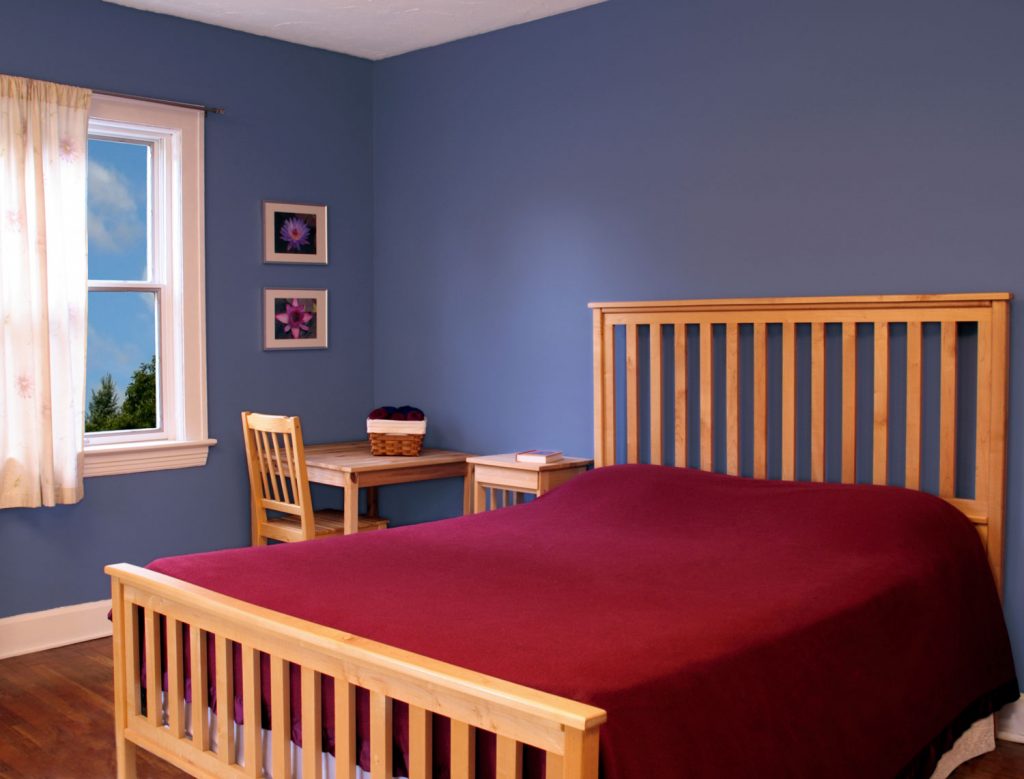We are visually gaining more than 80% of all sensory information. Therefore, the effect and choice of hues on selected paints is very important.
A common (untrained) human eye is able to recognize at least 2000-3000 shades, but the overall picture is always the result of the interaction of light – different shades in a given space. Each person perceives and uses individually, and and through them unconsciously reveals their mood and personality.
Choosing the right colour shade is very important and can significantly affect the acceptance or rejection of this realization by its surroundings. The perception of colour shades depends on many factors. The main features include the spectral composition of incident light (daily or artificial, intense or pale) and the direction of its impact, the direction of view of the observer, the characteristics of the surface, and the condition of the observer itself (such as visual quality, ambient light adaptation, age, mood, etc.). Colours act on the human subconscious, affect their behaviour, feelings and moods. Man subjectively prefers colours depending on gender, cultural environment, nationality, religion, age, political or social affiliation.
It is very important to choose a shade or combination of shades that will enhance the character of the interior or exterior and ensure the comfort of your home. Some colour shades calm down, recharge others, and disturb and cause e. g. sadness. You wouldn’t believe how a shade can affect your psyche.
 Also interesting is the different understanding of hues between men and women, which is actually given by their genetic equipment. Men usually distinguish only basic colour tones – for women we can find expressions that better characterize individual shades. If we compare the popularity of individual colours for men and women, then the favourite colours for both sexes can be red, brown, grey, and black; while yellow, white, orange, and green are the unpopular colours. The different view is on blue (popular for men, not for women) and pink (popular for women and unpopular for men). Men prefer orange over yellow and blue over red. On the contrary, women prefer red and yellow at the expense of blue and orange.
Also interesting is the different understanding of hues between men and women, which is actually given by their genetic equipment. Men usually distinguish only basic colour tones – for women we can find expressions that better characterize individual shades. If we compare the popularity of individual colours for men and women, then the favourite colours for both sexes can be red, brown, grey, and black; while yellow, white, orange, and green are the unpopular colours. The different view is on blue (popular for men, not for women) and pink (popular for women and unpopular for men). Men prefer orange over yellow and blue over red. On the contrary, women prefer red and yellow at the expense of blue and orange.
Also, the understanding of some colours as symbols is different for men than for women. For example, red has the meaning of heat and intimacy for most women, while men understand red as a warning and a danger. Blue colour means depression, business and leadership for most women, while intelligence, security and protection for most men.
The meaning of colours is also culture-dependent – white means joy, purity, marriage for ordinary Europeans, while white in the Far East symbolizes sadness and seriousness. Black is for us a symbol of mourning, while in Spain it is festive colour, etc.
We can see several examples of colour effects on some groups of the population.
- Men prefer orange over yellow and blue over red.
- On the contrary, women prefer red and yellow.
- Preschoolers like deep, bright colours.
- Economically well-off middle-aged people prefer pastel tones.
- Nature-related people like the yellow-green-brown scale.
- Generally, the green-blue scale is more used than yellow-yellow/green, the least popular colour is yellow-green colour
The basic law of colour perception is the excitement of bright colours and the calming impression of pastel colours.
